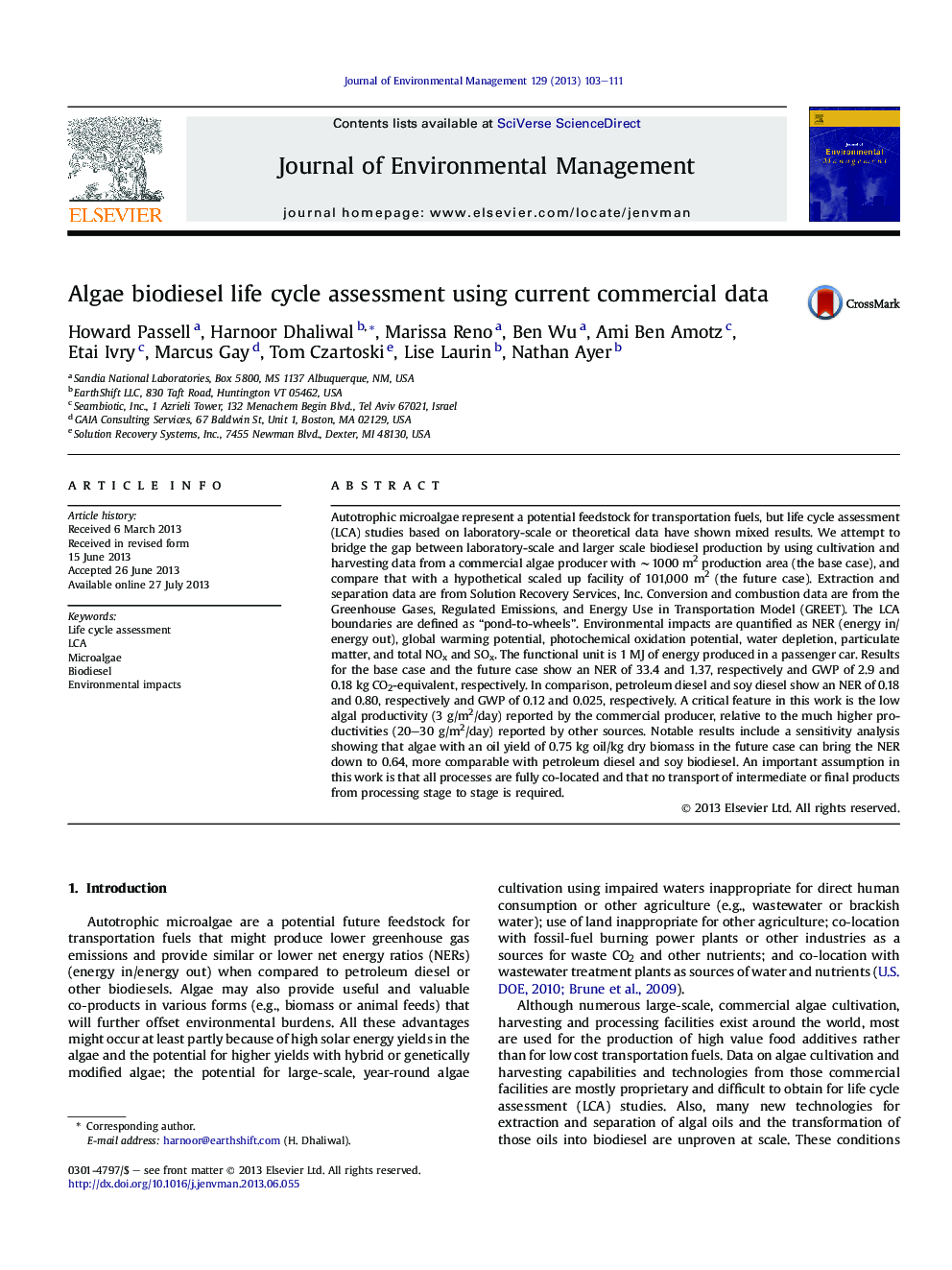| Article ID | Journal | Published Year | Pages | File Type |
|---|---|---|---|---|
| 1056150 | Journal of Environmental Management | 2013 | 9 Pages |
•A pond-to-wheels life cycle assessment of algae biodiesel was conducted by using current commercial data.•Two scenarios were examined: base case (using commercial data) and estimated future case.•The environmental impacts of the base case were at least an order of magnitude higher than the soy biodiesel and petroleum diesel.•The future case with improved efficiencies provided lower impacts.•Several technical breakthroughs needed for algae to play an important role in meeting future energy demand.
Autotrophic microalgae represent a potential feedstock for transportation fuels, but life cycle assessment (LCA) studies based on laboratory-scale or theoretical data have shown mixed results. We attempt to bridge the gap between laboratory-scale and larger scale biodiesel production by using cultivation and harvesting data from a commercial algae producer with ∼1000 m2 production area (the base case), and compare that with a hypothetical scaled up facility of 101,000 m2 (the future case). Extraction and separation data are from Solution Recovery Services, Inc. Conversion and combustion data are from the Greenhouse Gases, Regulated Emissions, and Energy Use in Transportation Model (GREET). The LCA boundaries are defined as “pond-to-wheels”. Environmental impacts are quantified as NER (energy in/energy out), global warming potential, photochemical oxidation potential, water depletion, particulate matter, and total NOx and SOx. The functional unit is 1 MJ of energy produced in a passenger car. Results for the base case and the future case show an NER of 33.4 and 1.37, respectively and GWP of 2.9 and 0.18 kg CO2-equivalent, respectively. In comparison, petroleum diesel and soy diesel show an NER of 0.18 and 0.80, respectively and GWP of 0.12 and 0.025, respectively. A critical feature in this work is the low algal productivity (3 g/m2/day) reported by the commercial producer, relative to the much higher productivities (20–30 g/m2/day) reported by other sources. Notable results include a sensitivity analysis showing that algae with an oil yield of 0.75 kg oil/kg dry biomass in the future case can bring the NER down to 0.64, more comparable with petroleum diesel and soy biodiesel. An important assumption in this work is that all processes are fully co-located and that no transport of intermediate or final products from processing stage to stage is required.
